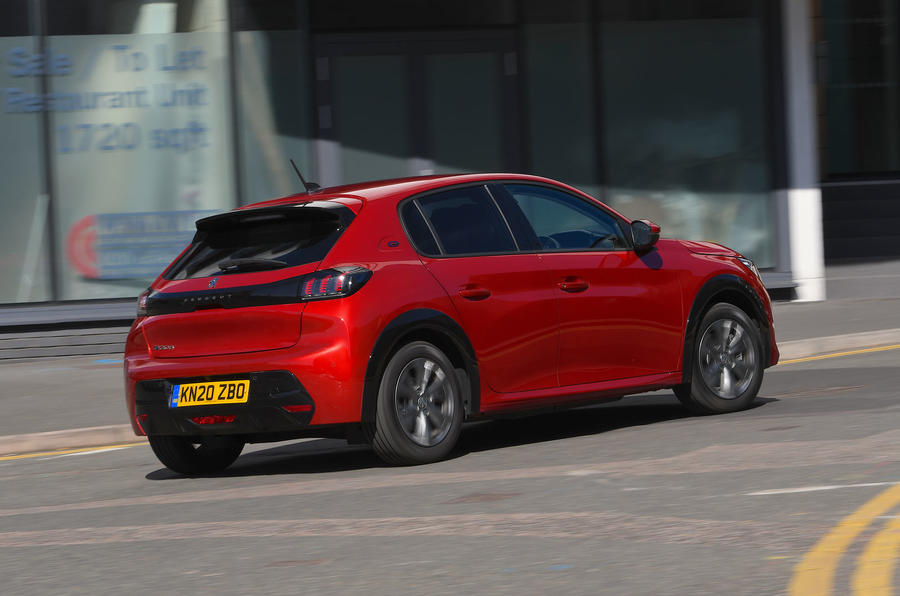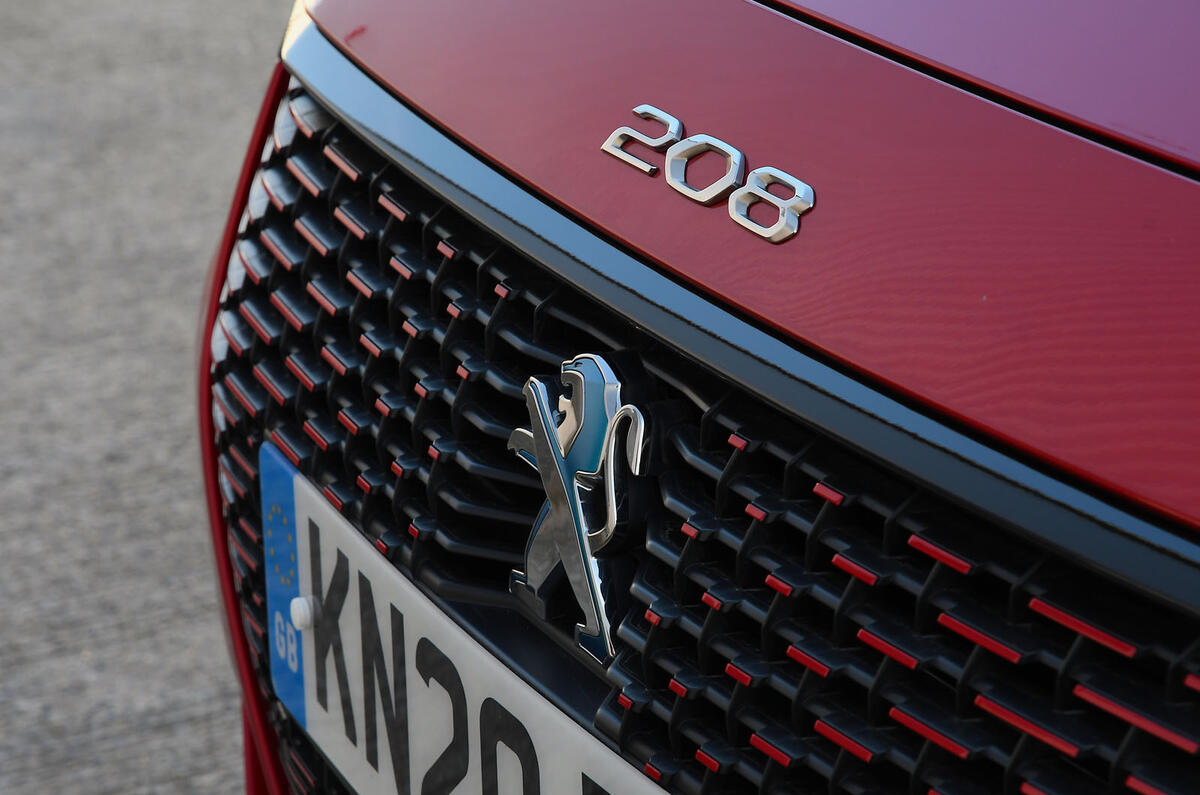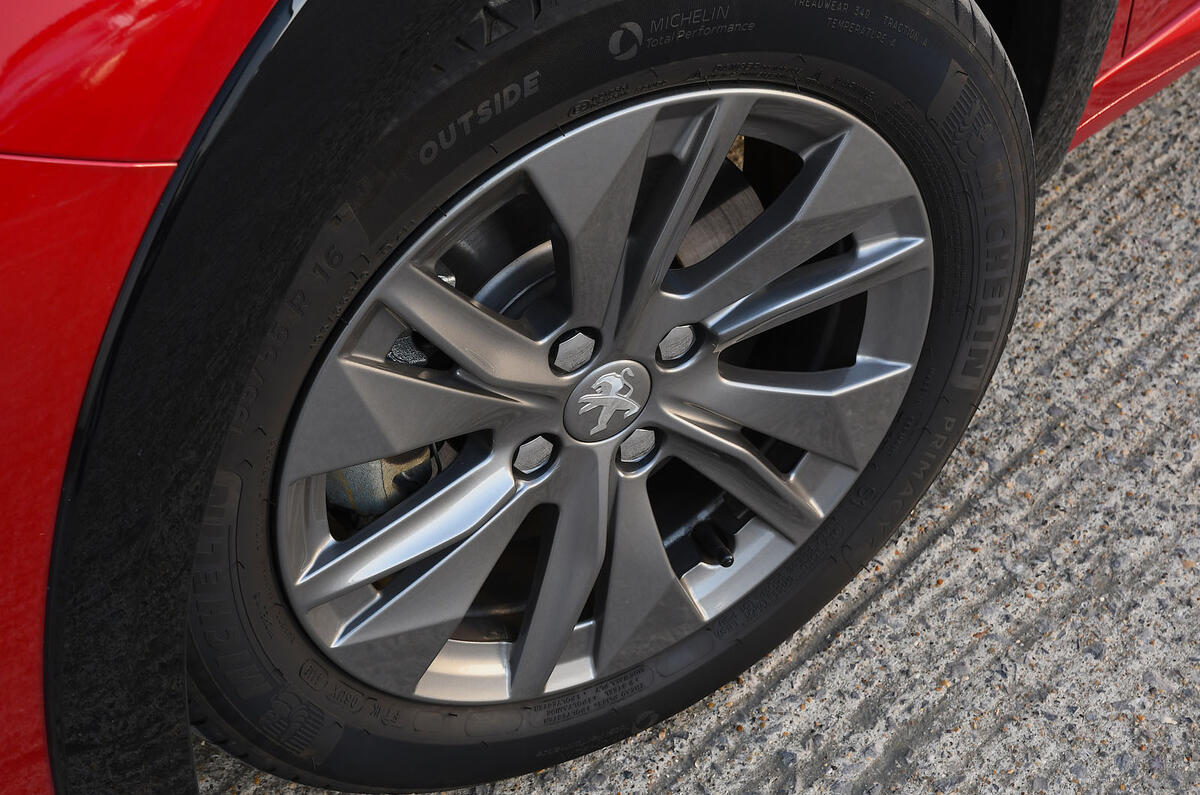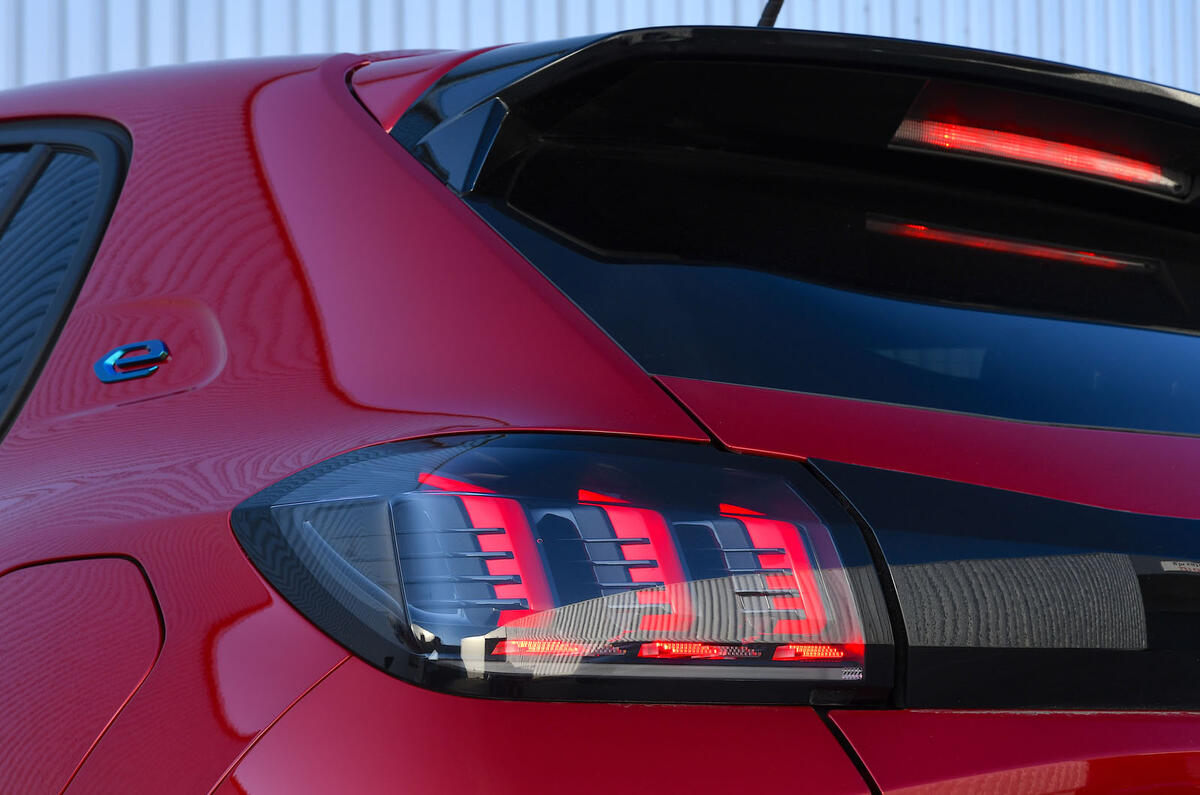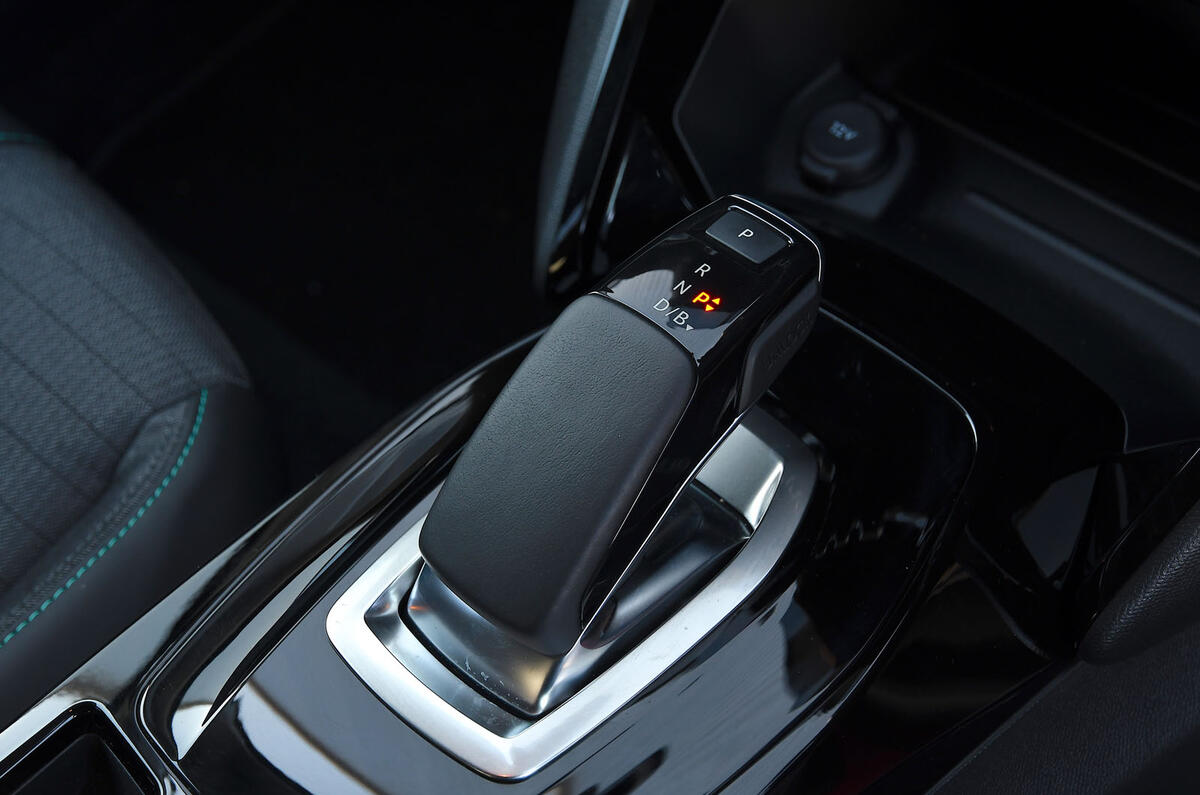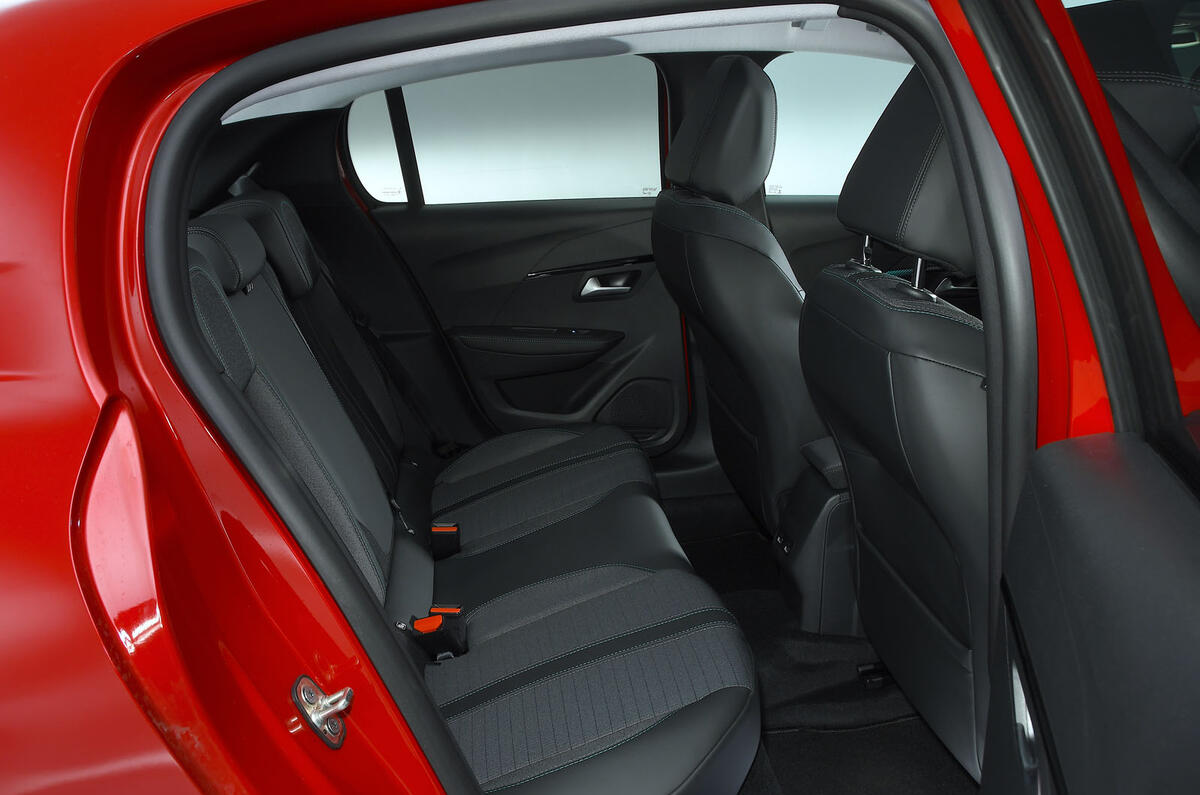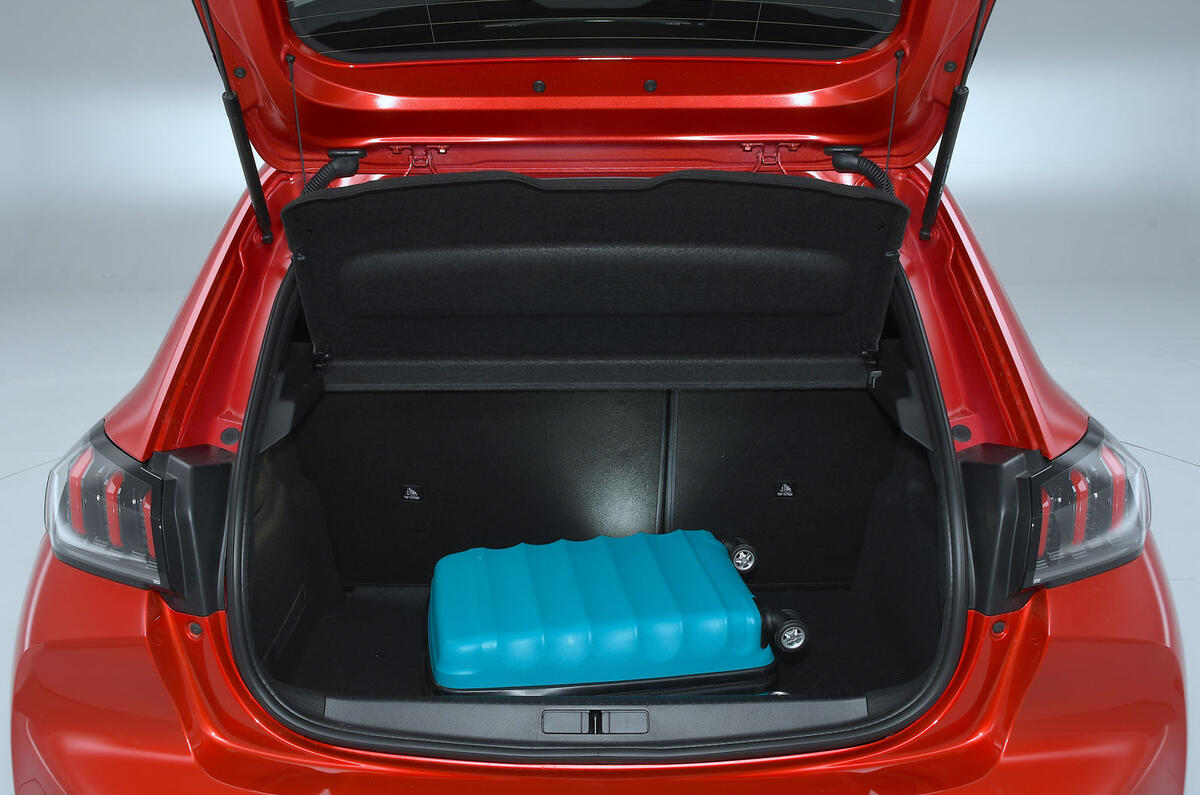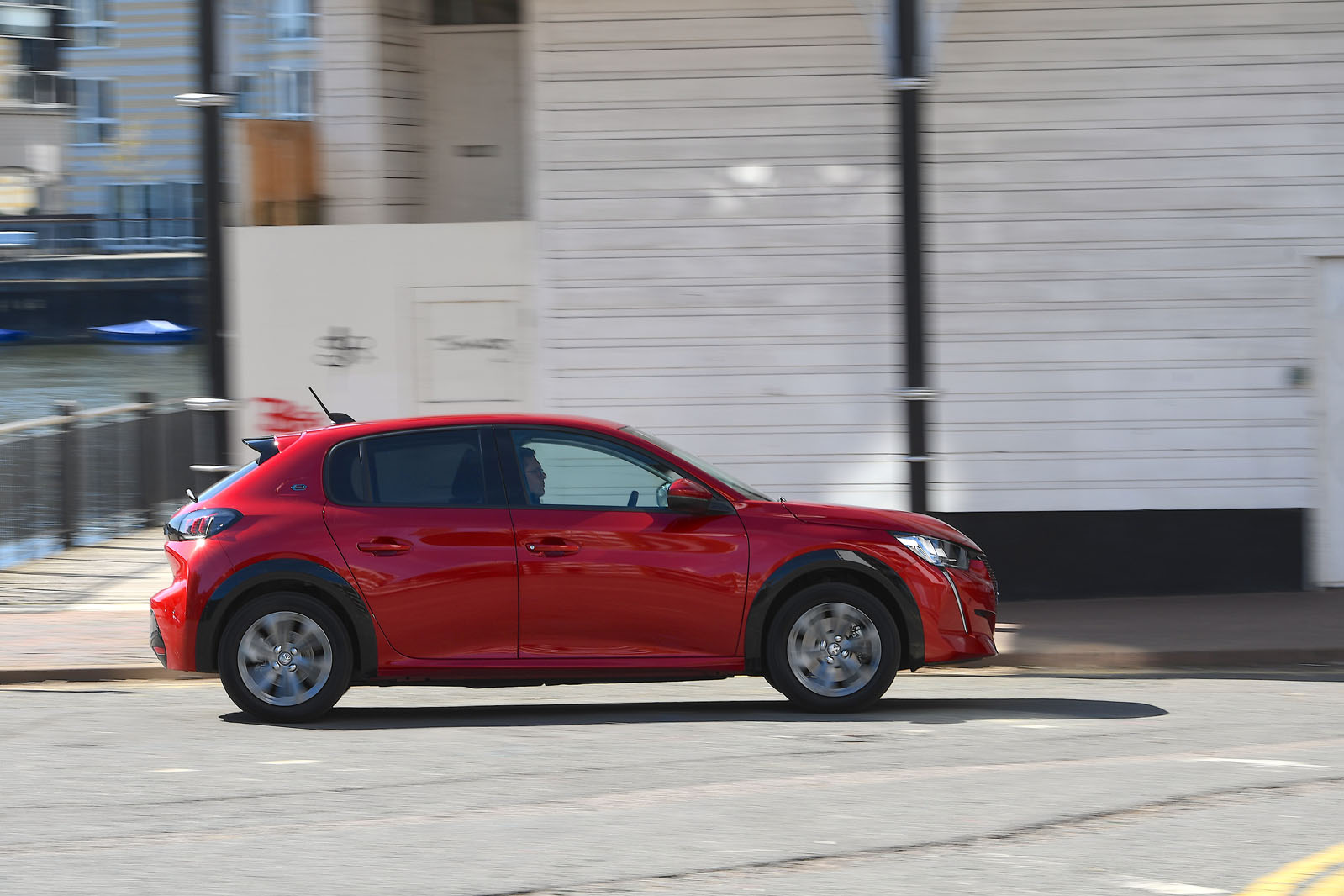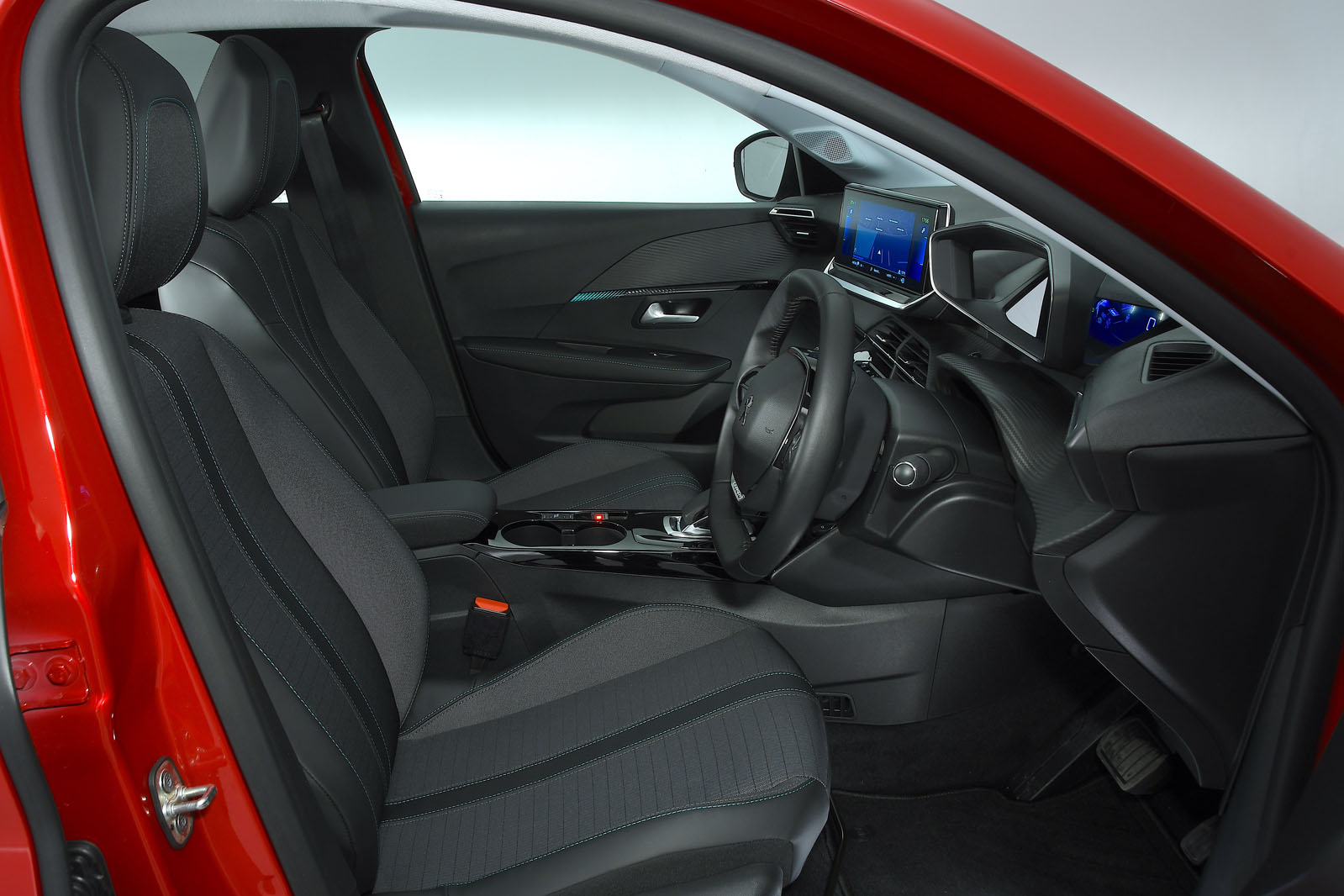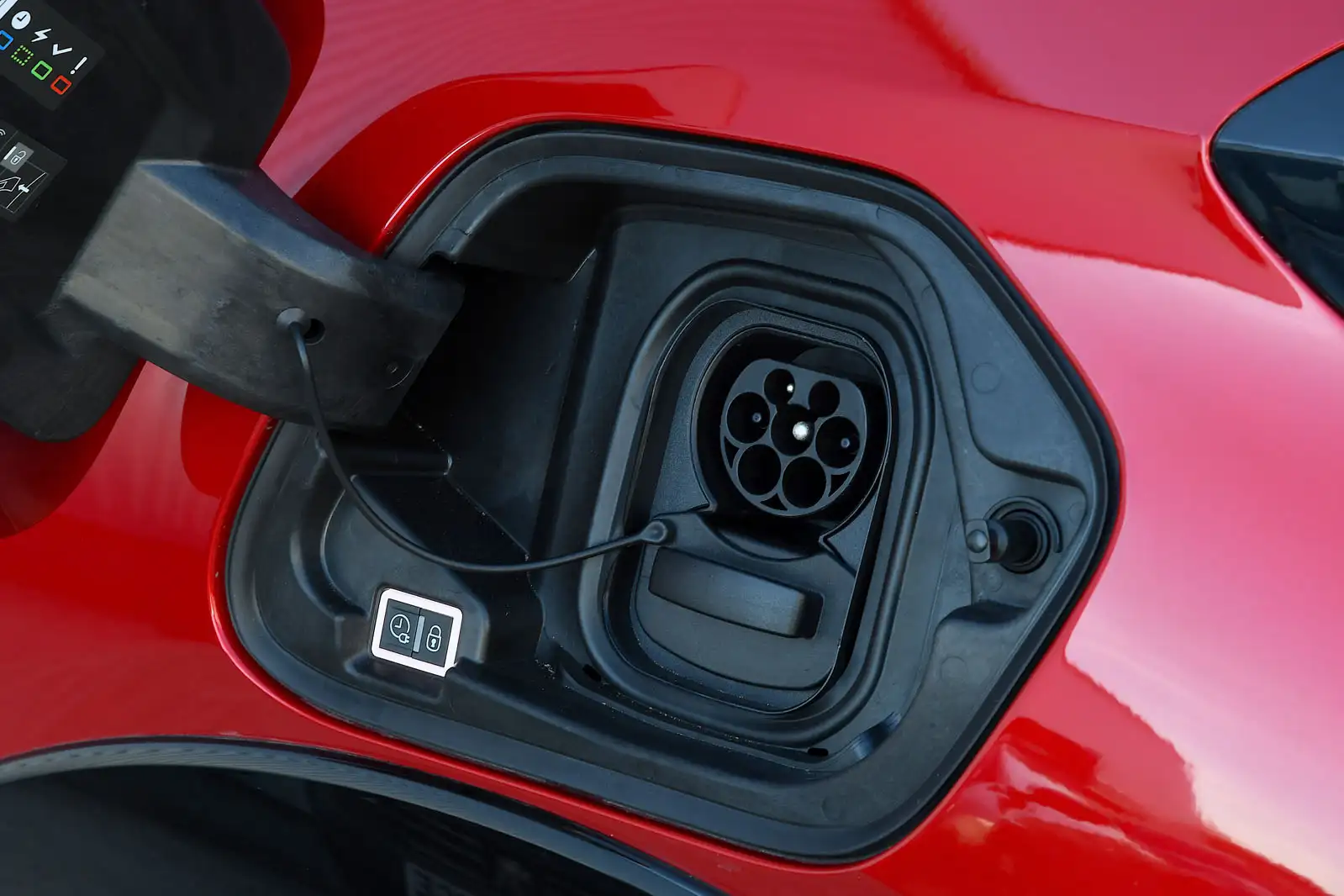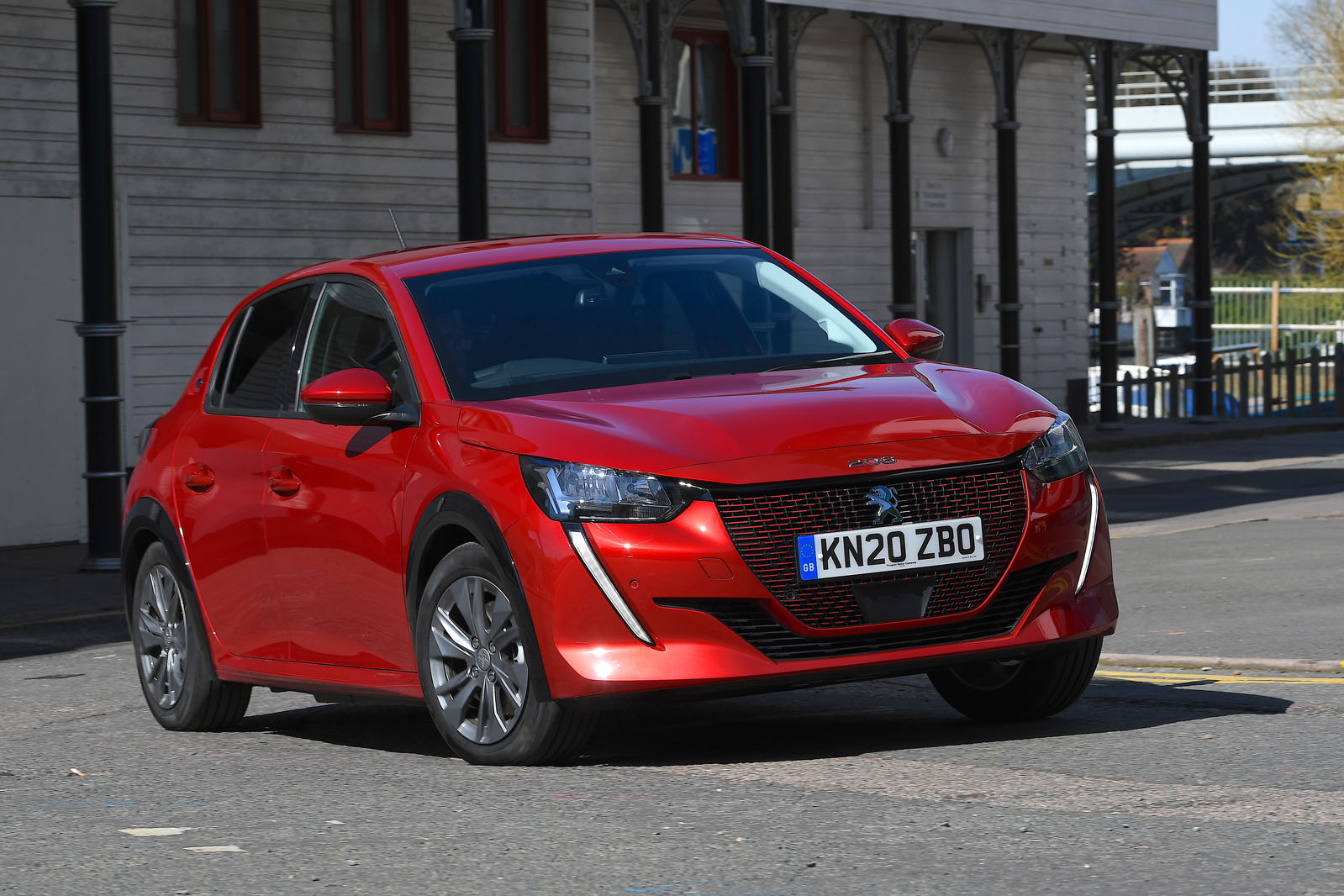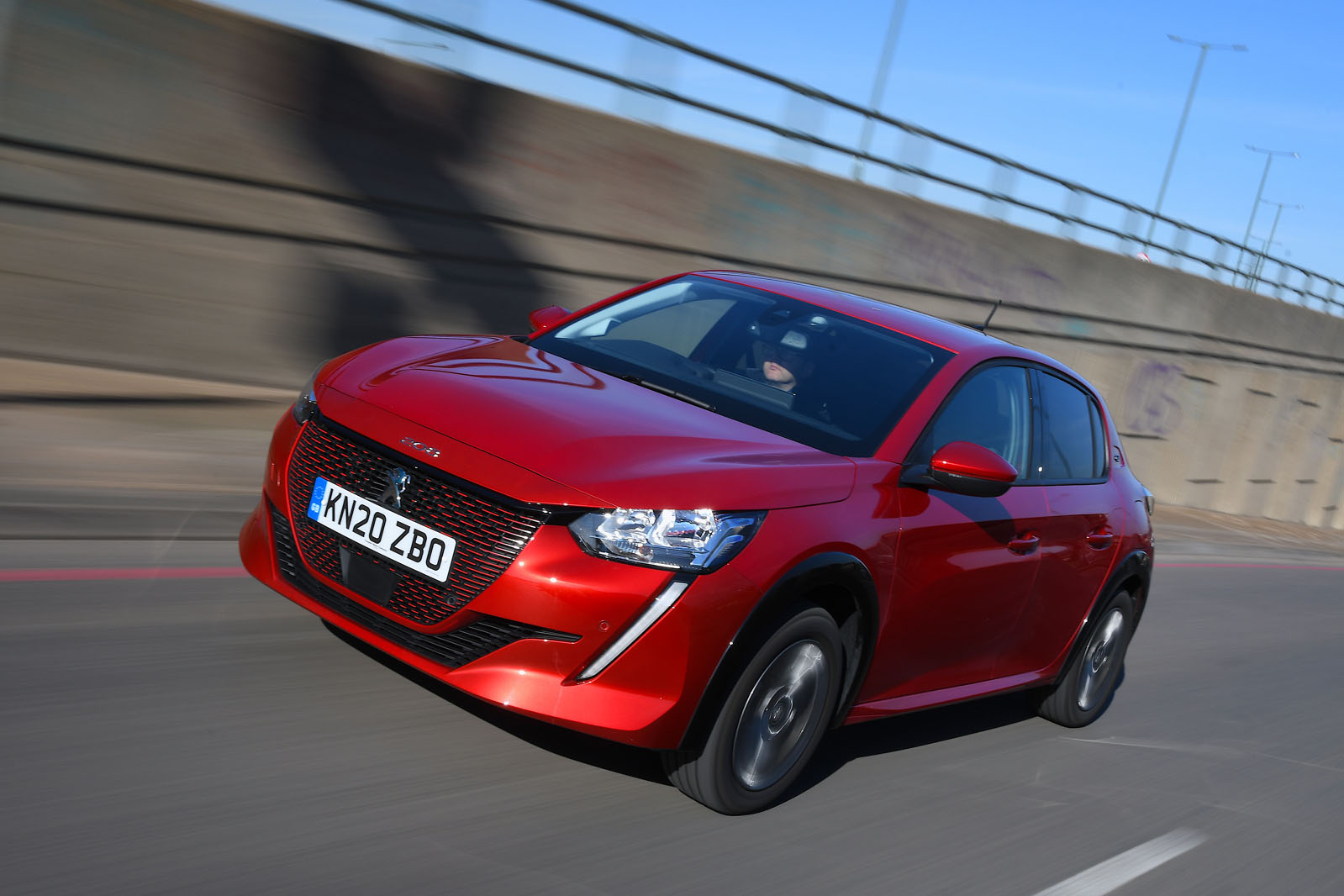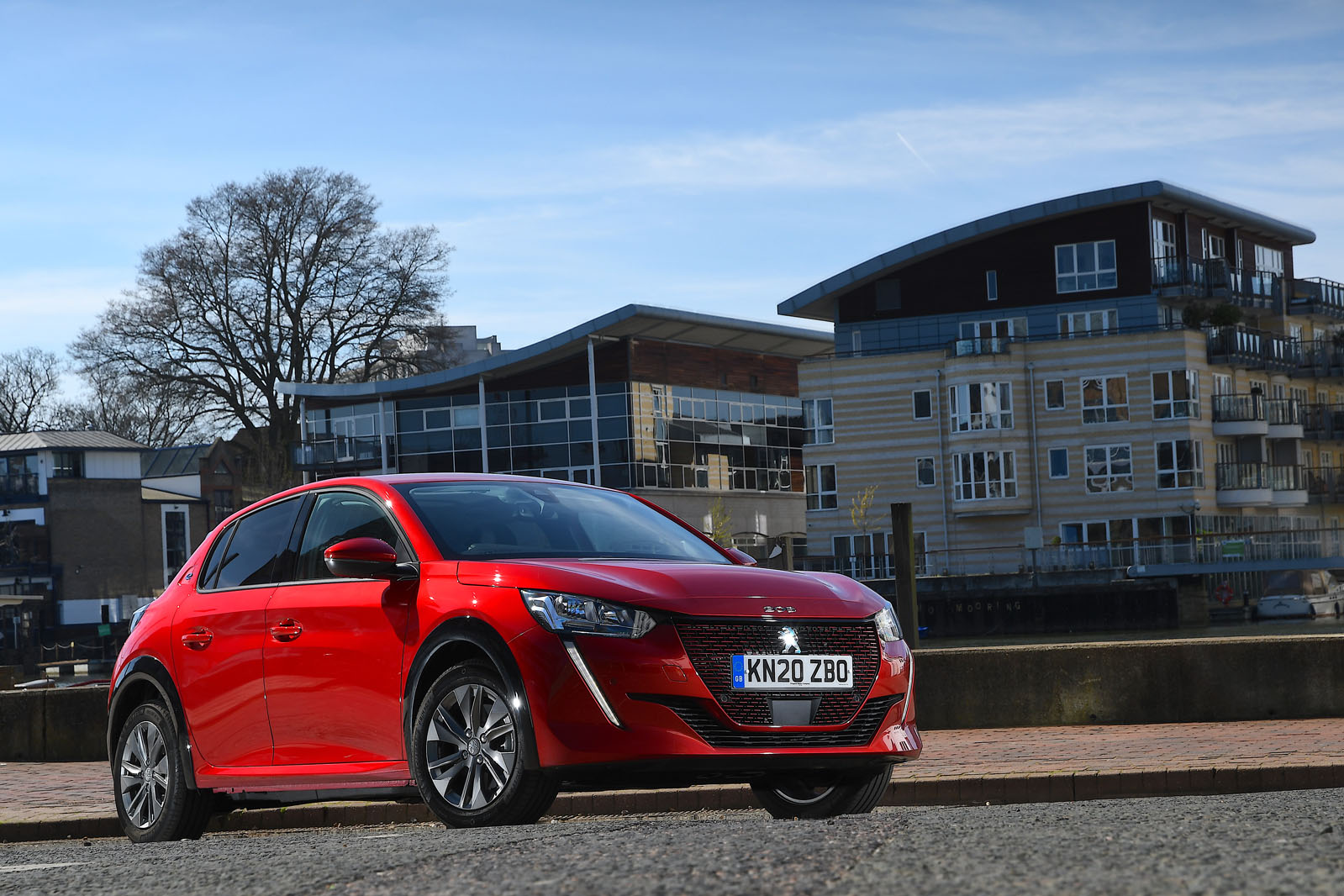Peugeot has been on a premium push over the past few years, challenging established upmarket brands for both finish and eye-catching design, and with the Peugeot 208 it has certainly succeeded in the latter, the slick dashboard design being a particular highlight.
Featuring the latest evolution of the now familiar i-Cockpit layout, the e-208 gets a high-set instrument cluster that sits above a small diameter steering wheel – although, as with other similarly equipped Peugeots, some drivers might find that the wheel rim still obscures some of the dials.
That’s a shame because, in this Allure Premium model, the TFT display ahead of the driver is enhanced by 3D graphics, the main information such as the digital speed readout effectively ‘floating’ just above the screen. It’s another conspicuously novel touch, but some testers liked it.
The Premium upgrade on our test car means the addition of a 10.0in infotainment screen that sits centrally and is angled towards the driver. Below this is a line of neatly arranged and easy-to-reach piano keys that provide shortcuts for the various audio, nav and climate controls.
Yet while soft plastics are used for the major touchpoints and the switchgear features a pleasing mix of gloss black and brushed metal finishes, there are still too many low-rent materials in evidence around the cabin for the car to strike a consistently high impression of perceived quality.
Peugeot’s commitment to packaging the EV running gear as unobtrusively as possible has made the most of what’s available when it comes to space and practicality but, in some areas, that’s still not a great deal. Low-set front seating provides reasonable leg and head room, although passenger space in the rear isn’t as good as in other superminis.
There are plenty of handy stowage spaces around the car plus no fewer than four USB (including USB-C) ports. The boot is also unchanged over the standard car, which means the same highish load lip but also a useful 311-litre capacity, which stretches to 1106 litres with the rear bench folded.
Peugeot e-208 infotainment and sat-nav
A 7.0in capacitive touchscreen infotainment system is standard on most 208 models, but the Premium (£650) upgrade of our car swaps it for a 10.0in set-up that adds sat-nav (including a three-year subscription to TomTom Live) to the existing Apple CarPlay, Android Auto and DAB radio. It also links to your smartphone using Peugeot MyApp, which lets you remotely check on the car’s range, plus schedule charging and pre-programme the climate control.
The infotainment system’s graphics are crisp and the responsiveness is good, making it fairly easy to use on the move. Less impressive are the shortcut piano keys that are housed just below the centre air vents. The silver-lined rocker switches for functions such as the heated screen and hazard warning lights are easy enough to use, but the infotainment controls set behind them are hard to see and offer little haptic feedback.




